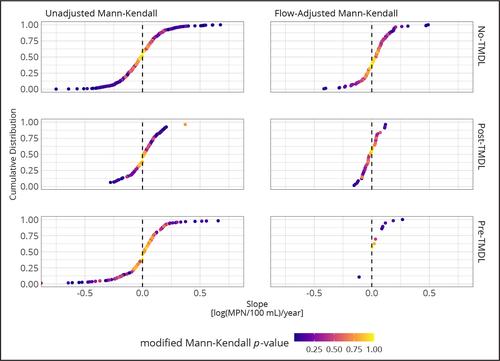Total Maximum Daily Loads and Escherichia coli Trends in Texas Freshwater Streams
Abstract
Fecal indicator bacteria are routinely used to assess surface water sanitary quality. The State of Texas uses Total Maximum Daily Loads to address water bodies that exceed the allowable fecal indicator bacteria criteria. The effectiveness of these processes in decreasing the fecal indicator bacteria concentrations has been debated due to the diversity and nature of fecal indicator bacteria sources. We assessed actual and flow-adjusted trends in measured Escherichia coli (E. coli) concentrations at 721 freshwater stream sites from 2001 through 2021. We also compared odds of statistical improvement of E. coli concentrations at sites before and after the adoption of Total Maximum Daily Loads (adopted from 2008 through 2014). Results indicate non-significant differences in the odds of statistically detected improvements in E. coli concentration between pre-Total Maximum Daily Load and post-Total Maximum Daily Load sites. Although the State of Texas and numerous watershed stakeholders have made efforts to address water quality impairments, these results join a body of evidence that water quality improvements are stagnating in the state. Furthermore, this study leverages water quality data used for state water quality standards assessment purposes and highlights that robust monitoring program design is needed to effectively assess the progress of water quality planning efforts.


 求助内容:
求助内容: 应助结果提醒方式:
应助结果提醒方式:


